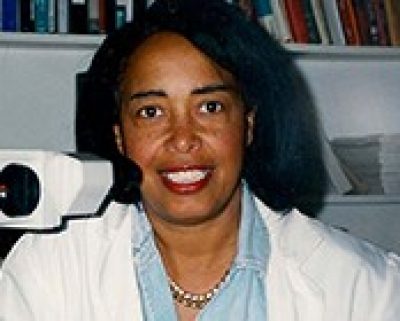Patricia E. Bath (1942–2019)
Patricia Bath discovered and invented a new device and technique for cataract surgery known as laserphaco.
Dr. Bath was the first woman ophthalmologist to be appointed to the faculty of the University of California at Los Angeles School of Medicine Jules Stein Eye Institute. She was the first woman to chair an ophthalmology residency program in the United States.
In 1974 Bath joined the faculty of UCLA and Charles R. Drew University as an assistant professor of surgery (Drew) and ophthalmology (UCLA). The following year she became the first woman faculty member in the Department of Ophthalmology at UCLA's Jules Stein Eye Institute. By 1983, she was chair of the ophthalmology residency training program at Drew-UCLA, the first woman in the US to hold such a position.
She received her medical degree from Howard University College of Medicine in Washington, D.C., interned at Harlem Hospital from 1968 to 1969, and completed a fellowship in ophthalmology at Columbia University from 1969 to 1970. Following her internship, Dr. Bath completed her training at New York University between 1970 and 1973, where she was the first African American resident in ophthalmology.
Despite university policies extolling equality and condemning discrimination, Professor Bath experienced numerous instances of sexism and racism throughout her tenure at both UCLA and Drew. She took her research abroad to Europe. Her work was accepted on its merits at the Laser Medical Center of Berlin, West Germany, the Rothschild Eye Institute of Paris, France, and the Loughborough Institute of Technology, England. At those institutions she achieved her "personal best" in research and laser science, the fruits of which are evidenced by her laser patents on eye surgery.
Dr. Bath was also a laser scientist and inventor. Her interest, experience, and research on cataracts lead to her invention of a new device and method to remove cataracts—the laserphaco probe. When she first conceived of the device in 1981, her idea was more advanced than the technology available at the time. It took her nearly five years to complete the research and testing needed to make it work and apply for a patent. Today the device is use worldwide. With the keratoprosthesis device, Dr. Bath was able to recover the sight of several individuals who had been blind for over 30 years.


